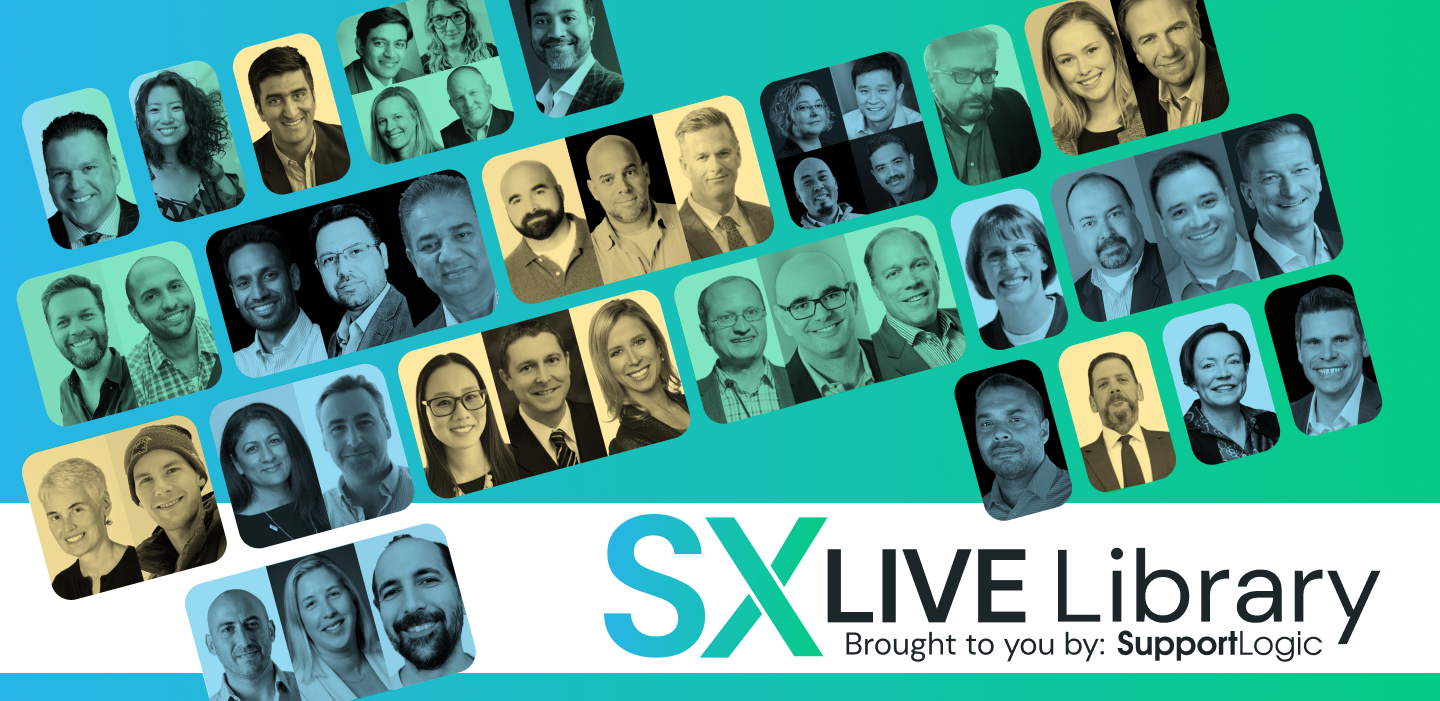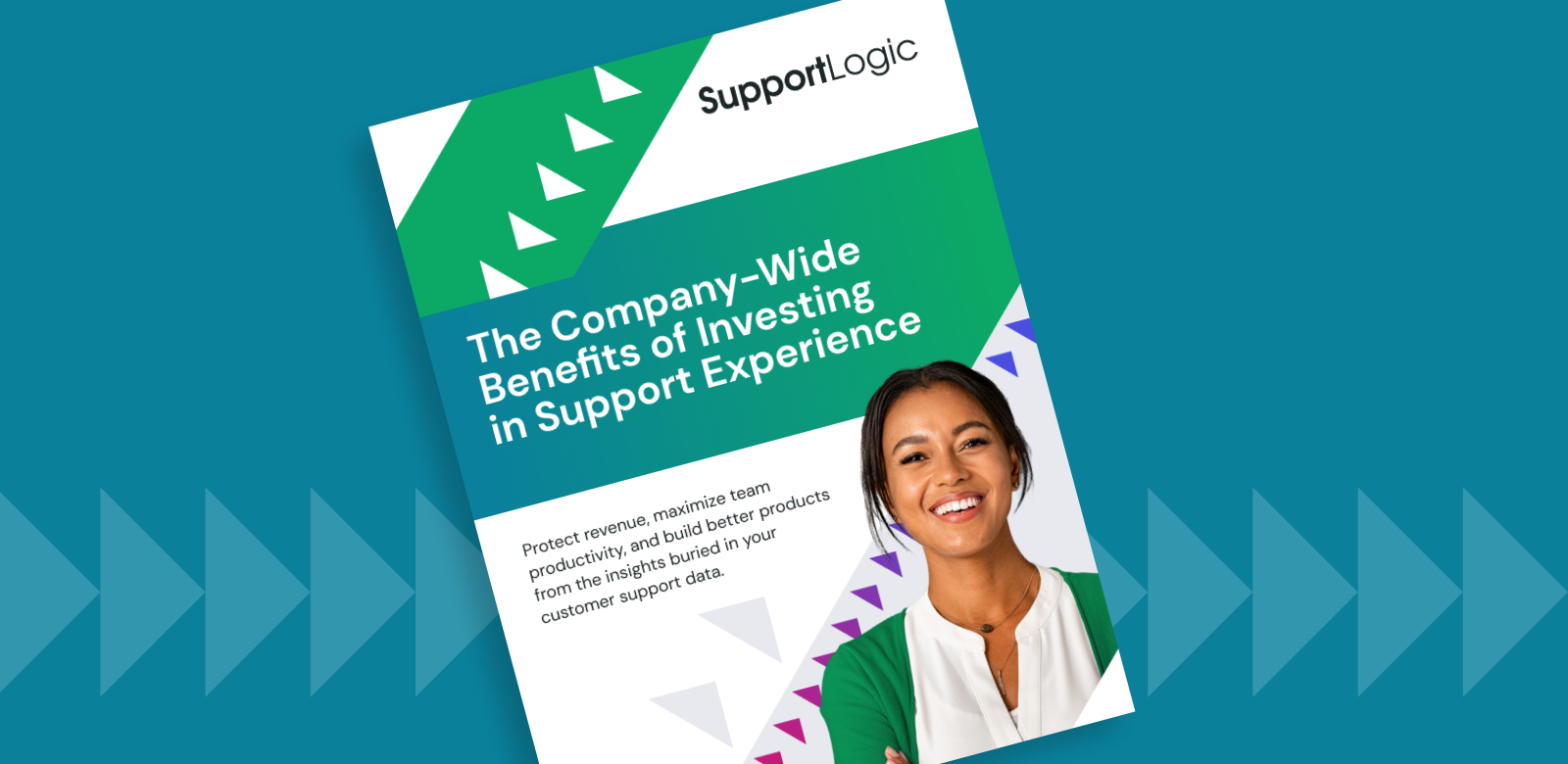
Nov 14, 2023
Support Experience is your Moat in the Generative AI Revolution
Support ExperienceSX Livecustomer experiencegenerative AI
Companies that reach $1B revenue are doing it faster than even five years ago. This is due to the sedimentary effect, a term borrowed from the late Steve Jobs. Jobs said, “Every technology leaves sediment. And new technologies are built on top of the sediments left by the companies before them.”
Ecommerce took off because the infrastructure for ecommerce already existed. The credit card, the Internet, one-day shipping. When the sediment is there, accelerating business becomes much easier. Every new company benefits from the incredible work done prior.
Within the last year, there’s a new breed emerging: AI-native companies. These companies are going to outpace cloud-native companies by a significant margin. This puts pressure on businesses to keep up with the pace of innovation. Hence the flurry of major vendors announcing their AI strategy. Not only are these announcements coming every day, but they’re joined by product releases. Technology is getting shipped at a much faster rate than ever before.
Let’s look at the time it takes for a technology to reach 100 million users:
The telephone took 75 years to reach 100 million users. Then the mobile phones took 16 years. Facebook took less than four and a half years, WhatsApp took three years, and Instagram took two years. This year ChatGPT took 100 days to reach 100 million users – by far the fastest adoption of any technology on the planet.
This is a great boon for the tech industry. The market now knows that AI works, and the question has changed from whether AI works to what AI can do. We’re no longer talking about technology, now we’re talking about the problems we can solve with technology.
AI is Now Table Stakes
There is a phrase from the founder of the World Economic Forum, Klaus Schwab: “In the new world, it’s not the big fish which eats the small fish, it’s the fast fish that eats the slow fish.” This has been proven over and over, especially in tech. Companies that can adapt the fastest are the winners.
For the last several years, dozens of companies have differentiated themselves as AI companies.
Now every company must be an AI company.
At SupportLogic, we take a different approach. We put the business problems at the forefront, instead of the technology. The technology will become a commodity. Solving business problems is the true differentiation. We use AI extensively in our products, but we see ourselves as a support company, not an AI company.
The Case for Support Experience
Let’s look at what happens after you land a customer – and in this market, landing customers has been harder than ever. How do you manage escalations? How do you manage the account? How do your support engineers interact with your customers? What does your product team prioritize? In every one of these functions, AI should have an impact. Your team must understand what AI can do, what AI cannot do, and the risks involved. Your CX team must be able to understand AI lingo and support it.
Every company in the AI space must also address safety, trust, privacy, transparency, compliance, hallucinations, and bias. These are very important elements to think through, and real dangers in AI. Today, we don’t ship a new drug to the market as soon as it leaves a lab, it goes through a rigorous testing process. We don’t fly a plane as soon as the engineers build it, it goes through rigorous safety testing procedures.
At the root of it all, experience is at stake. Experience is foundational in the AI revolution. Every company has a level playing field now with access to incredible AI technology, incredible access to cloud infrastructure and big data infrastructure. The true differentiation today is the experience you want to deliver to your customers. There is product experience, brand experience, employee experience, and customer experience.
Previously, support experience did not exist in a predominant way in the industry. Support experience was under customer experience, but it truly lifts all boats. Investing in support experience improves your product experience, brand experience, employee productivity, and so on. As an example, fewer escalations have reduced stress on employees, reduced attrition rates, and improved employee productivity. This is an investment that lifts every experience you can provide for your customers.
But experiences today are highly fragmented. We have multiple systems of engagement, customers are interacting with us through cases, chat, voice, social media, and so on. We use different systems of record for engineering and support. You may even have multiple ticketing systems for support either through acquisitions or other historical reasons.
Human agents can also be fragmented across geographies and different skill sets, creating an inconsistent experience when interacting with a company. Add virtual agents into the mix and the experience is fragmented even more.
The Importance of Observability in CX
Every brand must deliver a consistent unified support experience to their customers. That is what solidifies the brand experience. You can no longer deliver disparate experiences to your customers. It doesn’t work in today’s market. Experience is the mode of your organization, and delivering consistent and unified support experiences is hypercritical.
To do this, you must invest in observing customer interactions. If you look at any other technology, there are monitoring systems in place. But for a long while the industry has ignored monitoring customer interactions. We’ve become very reactive; we only focus when there is a firefight because we lack proactive monitoring and visibility. This needs to change as an industry, but this monitoring needs to extend to all systems of record, all systems of engagement, both human agents and virtual agents.
Support experience is not something only delivered by your support engineers. It needs to be delivered collectively from engineering, product support, success, sales, and any function that reaches the customer.
But we can’t control what we cannot observe. Observability is absolutely critical for gaining control over systems. This is true in the history of humanity, every advancement would not have been possible without our ability to observe beyond our limits. We can see microscopic things with microscopes. We can see far away with telescopes. We have satellites monitoring everything. These technologies allowed us to go beyond what’s possible and this concept needs to extend to customer interactions.
Building a Moat Around Your Business
Just like companies can adopt 100 million users in 100 days, companies can collapse within days. The most recent example is Silicon Valley Bank. SVB was an established entity, it had been in the industry for 30 years.
Yet within a matter of three or four days the users of Silicon Valley Bank lost confidence and the company went under. The lesson the Silicon Valley Bank story taught us as an industry is that we must pay attention to our voice of our customer. We can’t sit on the laurels of what we achieved in the past, we have to constantly evolve, adapt, because things are changing in a much rapid fashion.
Foundationally, companies can grow and protect their business only if they understand and act on unbiased signals from every customer interaction. The following tenets are vital:
- Extract signals from every customer interaction, not just a siloed view of a customer interaction.
- Look at them in a very unbiased way.
- Understand the signals and the context behind them.
- Act on the signals, because it’s not enough to present beautiful reports and walk away without changing behavior.
In the great acceleration, companies can quickly go extinct. Data insights must be part of daily workflows.
The signals coming from customers must inform what you’re building, must inform your product strategy, must inform the services you want to offer to your customers.
Stay tuned for parts 2 and 3, as we share product developments designed to help your teams stay on the cutting edge of support experience by using predictive and generative AI.
To learn more about the impact of generative AI on customer retention and loyalty, watch my keynote from SX Live 2023.
Don’t miss out
Want the latest B2B Support, AI and ML blogs delivered straight to your inbox?




